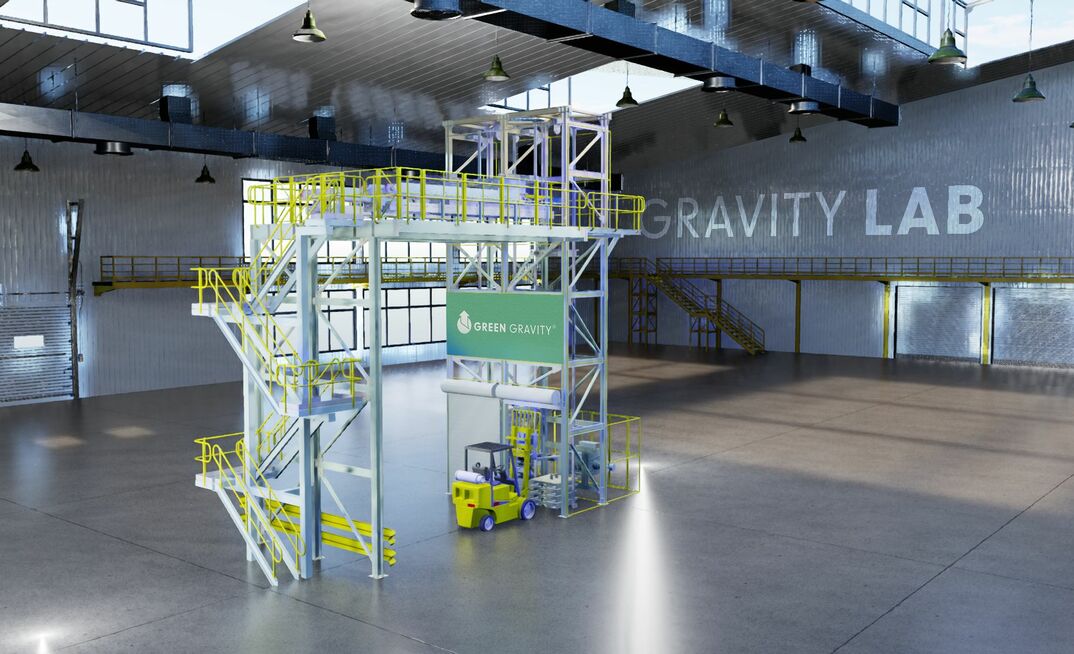Former high-ranking BHP executive Mark Swinnerton is making waves with Green Gravity as the company's pioneering gravitational energy storage technology gains traction.
Leveraging excess renewable energy to raise heavy weights and releasing it by lowering it during peak demand, this approach presents a compelling alternative to traditional battery solutions.
Swinnerton, an 18-year BHP veteran, believes Green Gravity is finally gaining the momentum it deserves.

"By using disused mine shafts, we can store solar or wind energy without new land use or significant environmental impact," explains Swinnerton.
YOU MIGHT ALSO LIKE
He sees this as a vital way to maximise Australia's vast renewable resources.
"It's about turning this energy generated during the day into stored power ready for evening peak demand, reducing reliance on coal and gas," Swinnerton said.
The concept is deceptively simple. Green Gravity's technology lifts massive composite weights – some 80t – up mine shafts using surplus renewable energy. When the grid requires additional power, these weights are lowered, converting potential energy into electricity.

"This process is not only efficient but also long-lasting, with no need for chemical processing and no performance degradation over time," Swinnerton said.
His decision to leave a secure position at BHP to start Green Gravity was driven by a commitment to addressing energy challenges by advancing an underappreciated renewable technology.
"During my time at BHP, I witnessed firsthand the increasing demand for sustainable energy solutions and the limitations of current storage options," he said.
"It became evident that by harnessing existing infrastructure, such as decommissioned mineshafts, we could provide a clean, sustainable, and cost-effective solution."
Green Gravity's focus on the circular economy, especially through the reuse of mining assets, aligns with its broader sustainability goals.
"Using old mine shafts, which I may say we have a lot of in the case of Australia, means we don't need new land, we don't disturb ecosystems, and we don't produce waste," Swinnerton said.
This approach also provides a tangible example of how businesses can integrate sustainability into their operations without sacrificing efficiency or cost-effectiveness.
With recent funding success – a $9 million capital raise backed by strategic investors – Green Gravity is poised for significant growth.
This financial momentum, combined with recognition such as Business Illawarra's 2024 Small Business of the Year award, highlights investor confidence in the technology's potential and its scalability.
Swinnerton envisions a future where Green Gravity's storage solutions are a common sight not just in Australia but globally.
"We believe our technology can capture a significant share of the energy storage market, potentially 10% or more of the global battery storage market," he said.
"With no major players dominating yet, we're well-positioned to secure a top-five spot as the sector grows."
The hard road to leading innovation
Swinnerton is clear-eyed about the challenges of scaling an innovative technology in a competitive industry.
"There's always going to be resistance to change, especially in a market such as energy storage," he said.
"But the need for sustainable, low-impact solutions is only growing.
"Our aim is to make gravitational storage a mainstream option, supporting the transition to renewable energy on a global scale."
For Swinnerton, the mission goes beyond market share – it is about leaving a legacy.
"I hope that Green Gravity helps tip the balance towards sustainable energy such that, for the next generation, the choice to deploy clean energy will be obvious," he said.
"The real impact would be a future where our technology, and others like it, contribute to a low-emission, high-sustainability energy system."
Green Gravity's approach to energy storage demonstrates the potential of combining innovation, sustainability, and practical application in addressing climate change. The company's gravitational storage technology offers a tangible vision for a sustainable future that is both ambitious and achievable.
The turning tide
Swinnerton is open about the "tough times" his startup company navigated while trying to attract investor interest in the early days and operating in the competitive business world.
He proudly highlights the company's recent collaboration with Wollongong Resources, a subsidiary of Jindal Steel in India, as the first of many recent successes.
"Wollongong Resources currently manages eight non-operational mineshafts, providing us with a significant opportunity to tailor our technology," Swinnerton said.
"We are also in talks with the Romanian federal government about 17 sites.
"Our partnership with Yancoal, a prominent industry figure, further demonstrates our commitment to creating strategic alliances."
It was also partnering with Bluescope Steel on a Gravity Lab at the old Port Kembla Steelworks.
When questioned about future prospects, Swinnerton said: "We have some significant ventures on the horizon, but I can't reveal them just yet.
"Stay tuned for some exciting announcements. We are also in advanced discussions with a major global mining company, showcasing our dedication to expanding our operations on a global scale."
























